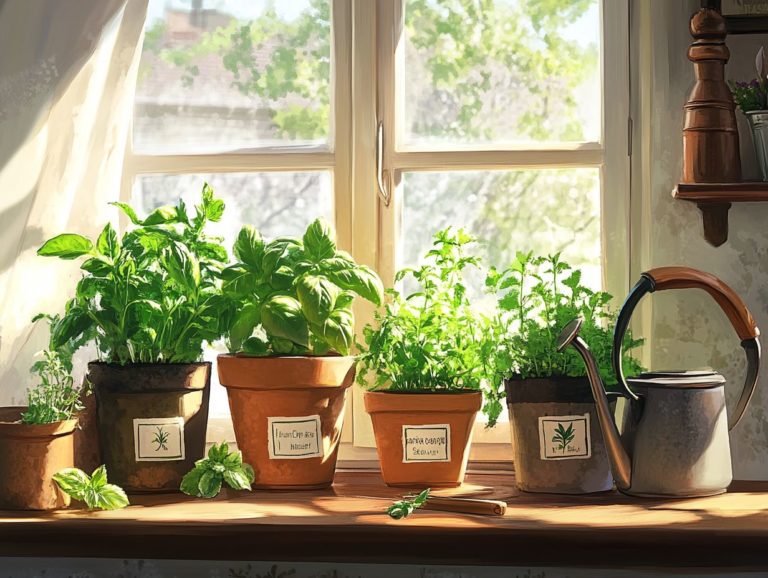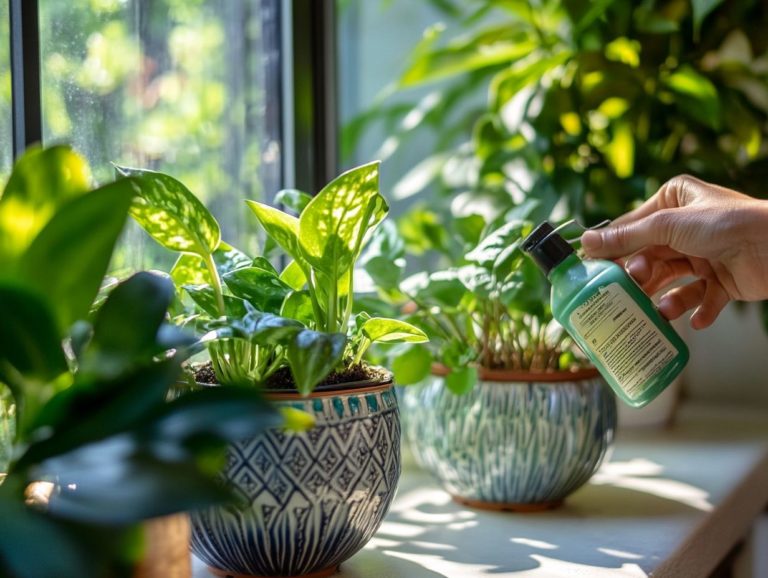What Causes Leaf Drop in Indoor Plants?
Indoor plants can turn your home into a peaceful sanctuary. But if they start dropping leaves, it’s time to take action! Understanding the causes of leaf drop is essential for maintaining the health of your beloved greenery.
This article explores what leaf drop is, the common environmental factors, pests, and diseases that may lead to this distressing issue. You’ll learn how to identify the root causes, empowering you to take proactive measures.
You will discover effective strategies for both prevention and treatment, along with best practices to ensure your indoor plants not only survive but thrive in your space.
Contents
- Key Takeaways:
- Understanding Leaf Drop in Indoor Plants
- Common Causes of Leaf Drop
- Identifying the Cause of Leaf Drop
- Preventing and Treating Leaf Drop
- Tips for Maintaining Healthy Indoor Plants
- Frequently Asked Questions
- What Causes Leaf Drop in Indoor Plants?
- Why are my indoor plant’s leaves turning yellow and falling off?
- Can too much sunlight cause leaf drop in indoor plants?
- Do indoor plants need to be fertilized to prevent leaf drop?
- What role do pests play in causing leaf drop in indoor plants?
- Can stress cause leaf drop in indoor plants?
Key Takeaways:
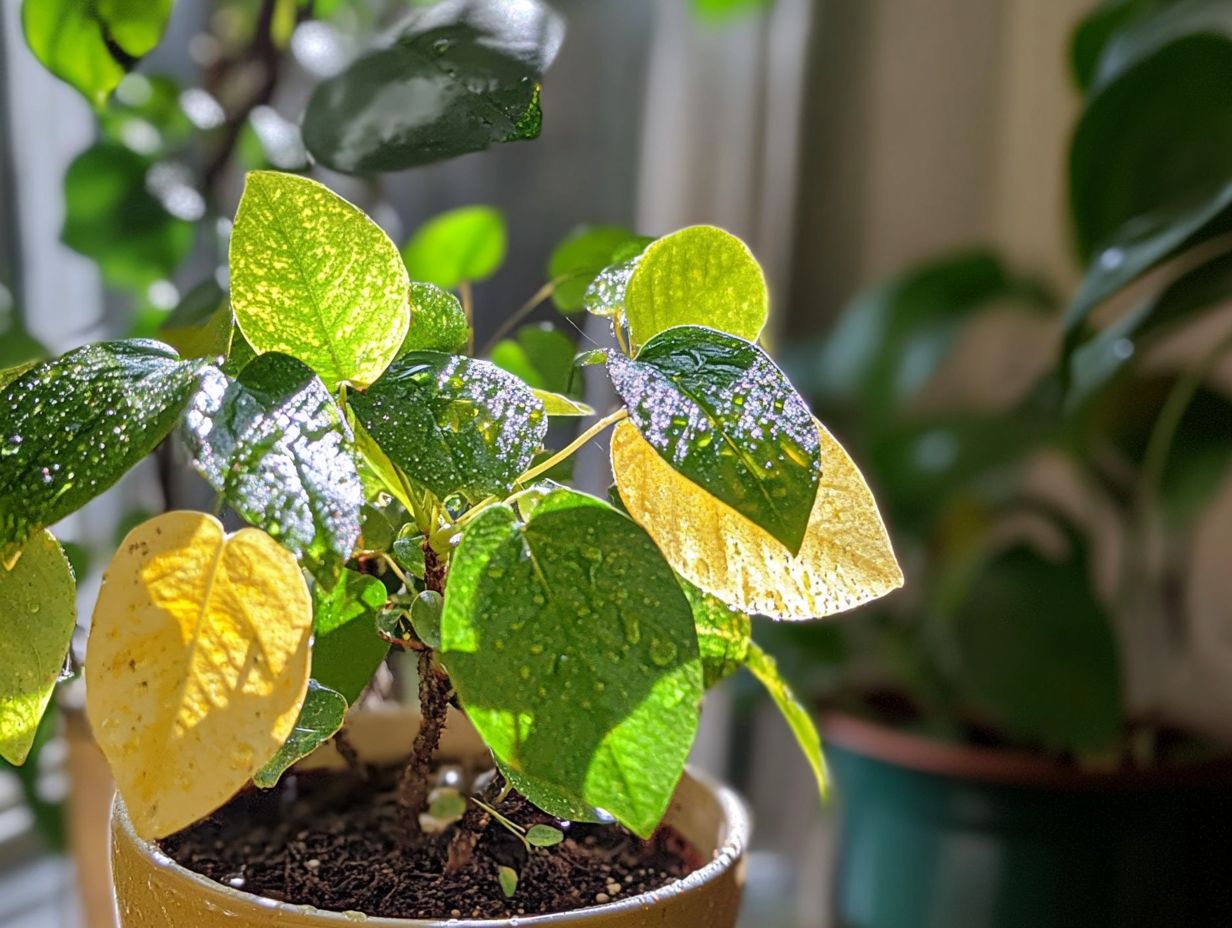
- Environmental factors, pest infestations, and diseases can all contribute to leaf drop in indoor plants.
- Spotting the cause of leaf drop is key to saving your plants!
- Proper plant care and maintenance, including regular watering and pest control, can help prevent leaf drop and keep your indoor plants healthy.
Understanding Leaf Drop in Indoor Plants
Understanding leaf drop in your indoor plants is crucial for preserving their health and vitality. Various factors, like changes in moisture in the air, watering mistakes, and nutrient shortages, can lead to leaves falling.
This phenomenon often shows itself through yellowing leaves or sudden shedding of healthy foliage. It’s a natural response to stress, signaling underlying issues that need your immediate attention.
By recognizing these signs and adopting effective plant care strategies, you can ensure that your tropical plants thrive, even in challenging indoor conditions.
What is Leaf Drop?
Leaf drop occurs when leaves turn yellow and eventually fall off, often indicating deeper issues with the plant’s health or care. This can be a clear signal from your plant, possibly caused by insufficient light, irregular watering, pests, or nutrient shortages.
Healthy leaves should showcase a vibrant green color, a firm texture, and a strong appearance. In contrast, deteriorating leaves may show discoloration, wilting, or unsightly spots. Recognizing the difference between thriving plants and struggling ones is essential for any conscientious plant owner.
By monitoring these changes, you can catch problems early and implement prevention strategies, ensuring your indoor plants flourish.
Common Causes of Leaf Drop
Common causes of leaf drop in your indoor plants can stem from various factors, including environmental changes, pests, plant illnesses, and improper nutrition.
Each of these elements can significantly impact the health of your plants, resulting in unsightly foliage.
Environmental Factors
Environmental elements play a major role in leaf drop. Fluctuations in moisture in the air, temperature changes, excessive heat, and cold drafts can stress your plants, leading to leaf loss.
These conditions can create an environment that is either too dry or excessively wet for optimal growth. For example, if moisture levels dip below 40%, many houseplants, especially tropical varieties, may start shedding leaves in response to the dry air. Conversely, too much moisture can cause fungal problems, also contributing to leaf loss.
Keep your plants happy by maintaining a stable temperature range, ideally between 65 F and 75 F. Sudden temperature changes can shock your plants. Simple fixes like using a humidifier, placing a pebble tray filled with water nearby, or moving your plant away from drafts can effectively reduce these issues and support lush, healthy foliage.
Pest Infestations
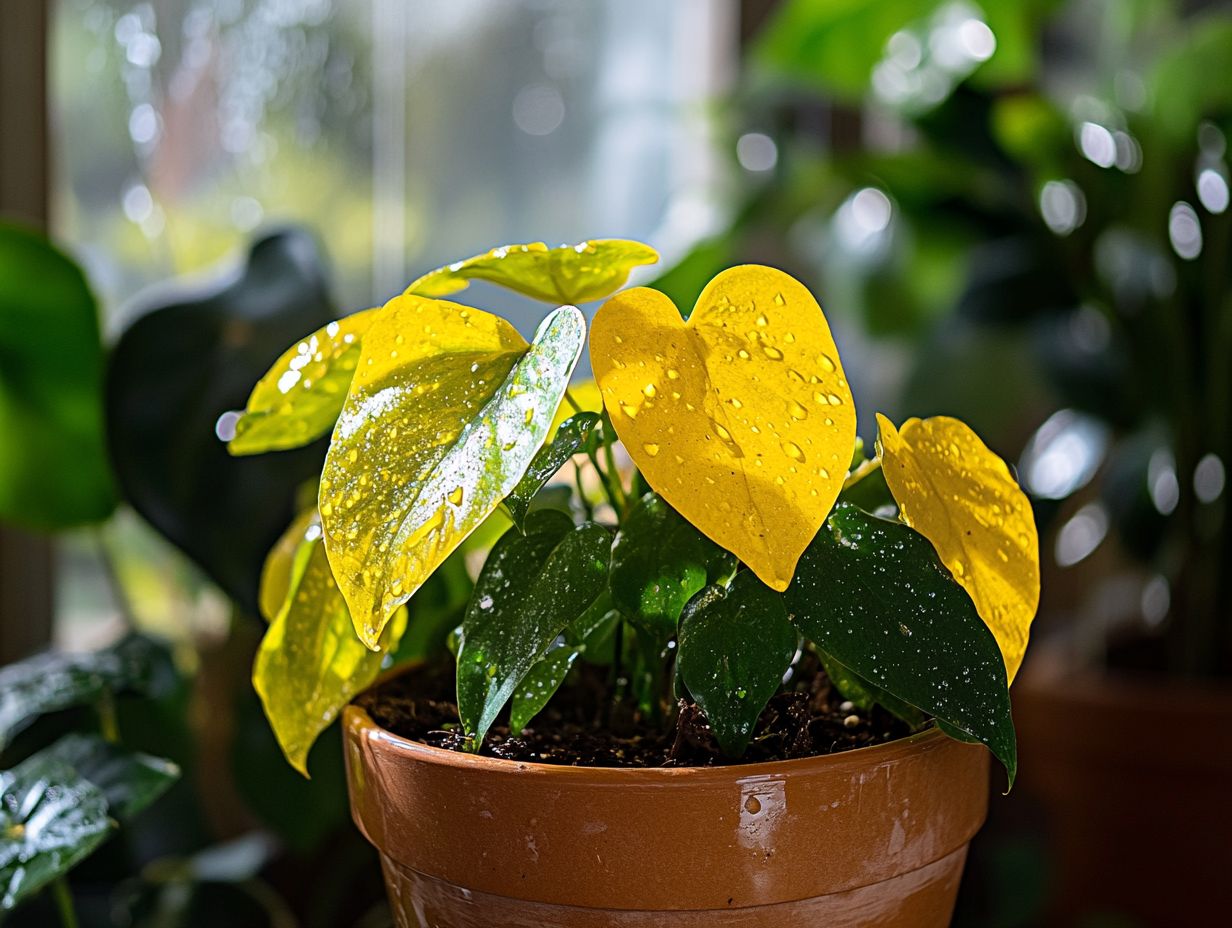
Pest infestations, including a variety of insect pests, can lead to significant leaf drop in your indoor plants. They damage the leaves and undermine the overall health of the plants.
Common culprits like spider mites, aphids, and mealybugs invade the delicate structures of your houseplants. They often cause unsightly discoloration, wilting, and ultimately, leaf drop. These pests can leave behind sticky residues and toxins, further stressing your plants.
To effectively tackle these nuisances, you might consider using insect sprays that target many pests. Alternatively, soapy water that helps control pests offers a more targeted, eco-friendly approach. This method disrupts the pests’ cellular membranes without resorting to harsh chemicals, making it a safer choice for both your plants and their environment.
Regular monitoring and early intervention are crucial. Maintain a thriving indoor garden.
Disease
Plant diseases play a crucial role in leaf drop. They often reveal themselves through symptoms like yellowing leaves and a general decline in plant vitality.
These ailments can severely impair a plant’s ability to absorb essential nutrients from the soil. This leads to stunted growth and heightened susceptibility to stress.
Common diseases, such as root rot, powdery mildew, and leaf spot, not only undermine the plant s health but also pave the way for secondary complications if left unaddressed. Act now to adopt effective strategies that keep your plants thriving!
This includes maintaining optimal watering practices, ensuring proper drainage, and providing ample sunlight.
By creating a nurturing environment, you can significantly diminish the risk of these diseases and bolster the overall resilience of your plants.
Identifying the Cause of Leaf Drop
To effectively intervene in leaf drop for your indoor plants, it’s crucial to identify the root cause. This process requires keen observation and assessment of several factors, including soil moisture, light levels, and your overall plant care strategies.
How to Determine the Root Cause
To uncover the root cause of leaf drop, begin by assessing the moisture levels in the soil with a moisture meter. Take a moment to evaluate any recent environmental changes that could have impacted your plant. This initial assessment is essential, as improper watering can induce stress, leading to leaf shedding.
Next, consider additional factors such as light exposure, temperature fluctuations, and drafts that may be affecting your indoor plant’s health. It’s also wise to inspect for signs of pests or disease that can further aggravate leaf drop.
By observing the overall environment and adjusting as needed, you can significantly enhance the condition of your plant. Create a more nurturing setting for its growth and stability.
Preventing and Treating Leaf Drop
To prevent and treat leaf drop, you must implement effective strategies and solutions designed to tackle issues like humidity levels, nutrient deficiencies, and proper watering techniques. Doing so ensures the health and vitality of your indoor plants, allowing them to thrive.
Effective Strategies and Solutions
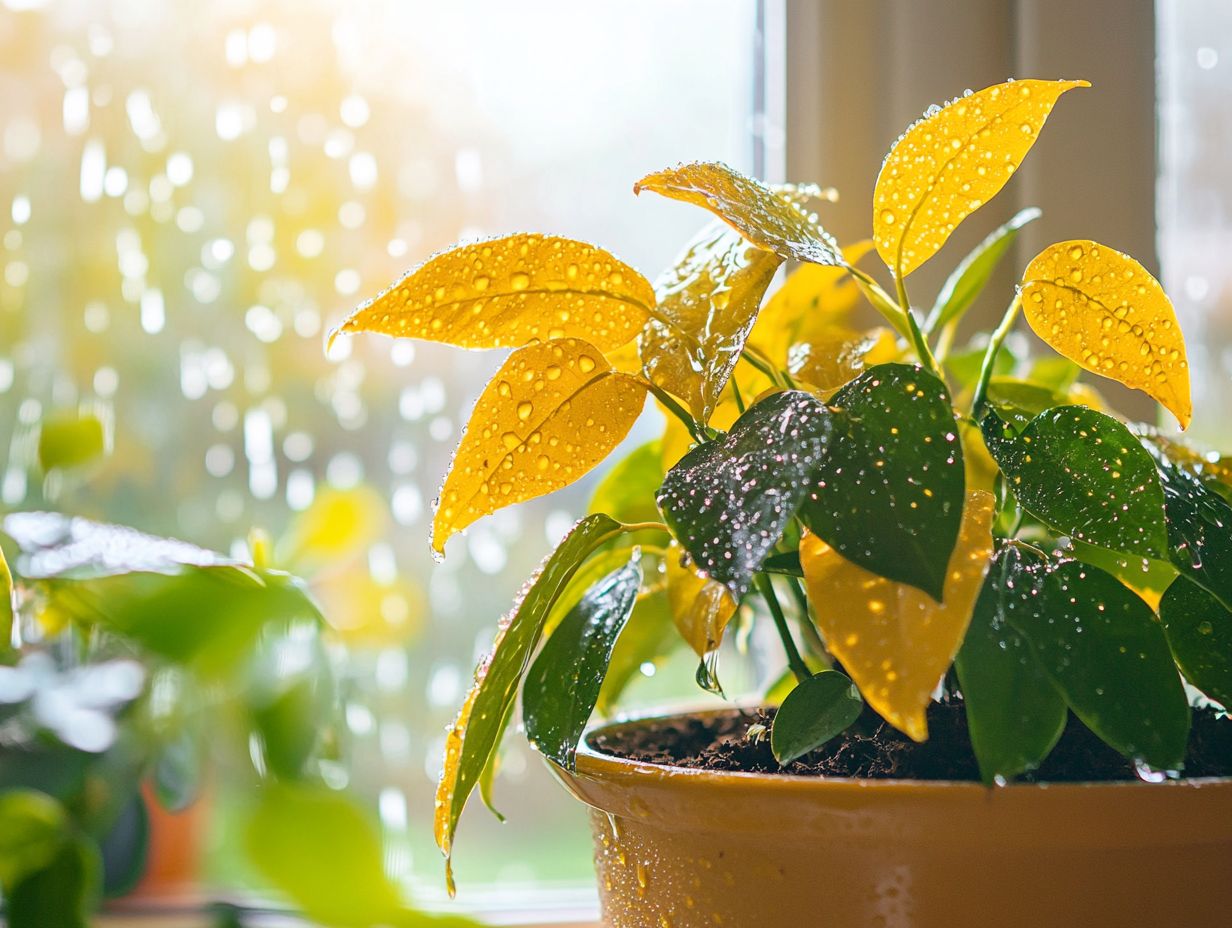
Effective strategies for preventing leaf drop include ensuring proper lighting, maintaining adequate humidity levels, and addressing common watering mistakes that could harm your indoor plants.
To create a thriving environment, position your plants in areas where they can bask in sufficient natural light. Many varieties flourish in bright, indirect sunlight. Mimicking their native habitats is key; using a humidifier or placing a water tray nearby can elevate moisture levels in the air to keep your plants happy.
Understanding the right watering schedule is crucial. Overwatering can invite root rot, while underwatering may stress your plants even more. By incorporating these simple yet effective techniques, you can foster healthier indoor plants and significantly reduce the chances of leaf drop.
Start checking your plants today for signs of problems! Your indoor garden deserves the best care.
Tips for Maintaining Healthy Indoor Plants
To keep your indoor plants thriving, it’s essential to embrace a blend of consistent care, a keen awareness of nutrient deficiencies, and vigilant observation of leaf patterns. This overall care approach will greatly enhance their longevity and vitality, allowing your green companions to flourish in your space!
Best Practices for Plant Care
Understanding the specific needs of your indoor plants is key to effective care. Pay attention to their requirements for watering, humidity, and light levels to prevent pesky issues like leaf drop.
Each species has its own unique preferences, including how often it likes to be watered and the type of light it thrives in. Many caretakers fall into the trap of overwatering, which can lead to root rot and a host of other complications. On the flip side, some may overlook humidity, resulting in dry leaves and stunted growth.
Regularly monitor light exposure to ensure your plants receive the right amount of indirect sunlight. Adjusting humidity levels whether by misting or placing a humidifier nearby can significantly boost the vitality of these green companions.
Frequently Asked Questions
What Causes Leaf Drop in Indoor Plants?
Leaf drop in indoor plants can be caused by a variety of factors, including the following:
Why are my indoor plant’s leaves turning yellow and falling off?
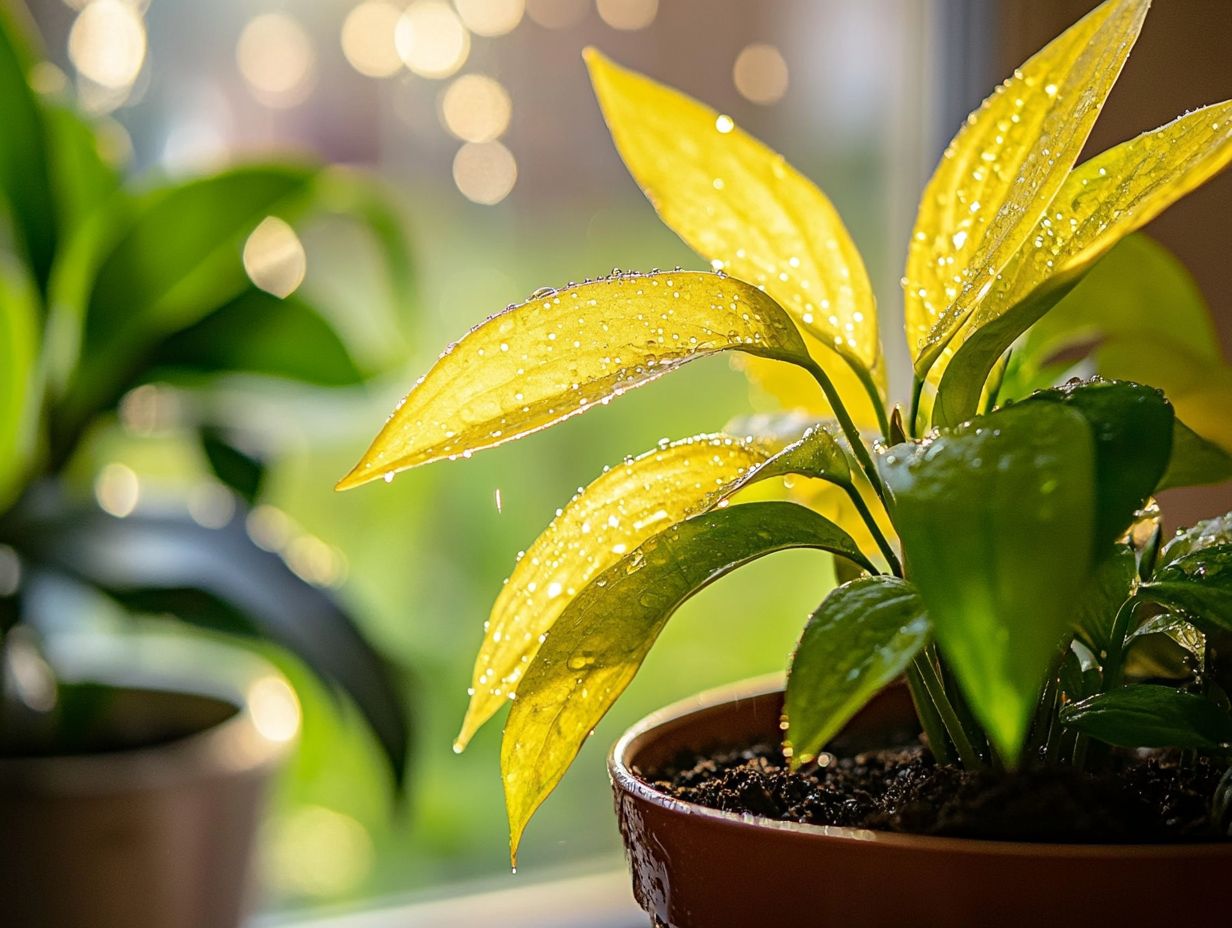
Yellowing and dropping of leaves in indoor plants is often a sign of overwatering or underwatering. It can also be caused by nutrient deficiencies, pest infestations, or inadequate sunlight, leading to leaf loss.
Can too much sunlight cause leaf drop in indoor plants?
Yes! Overexposure to direct sunlight can cause leaf scorching and eventual leaf drop in indoor plants. It’s important to provide your plants with the appropriate amount of sunlight for their specific needs, as excessive heat can also contribute to plant shock.
Do indoor plants need to be fertilized to prevent leaf drop?
Regular fertilization can help prevent leaf drop in indoor plants by providing essential nutrients that promote healthy growth. Be sure to use a fertilizer specifically formulated for indoor plants.
What role do pests play in causing leaf drop in indoor plants?
Pests, such as spider mites and mealybugs, can cause significant damage to indoor plants and lead to leaf drop. Regularly inspect your plants for signs of insect pests and take appropriate measures, such as using insecticidal soap or a broad-spectrum insecticide, to eliminate them and prevent plant diseases.
Can stress cause leaf drop in indoor plants?
Yes, indoor plants can experience stress from changes in environmental conditions. Fluctuations in temperature or humidity can lead them to drop leaves as a way to protect themselves.
Keep your plants happy and healthy by creating a stable environment for them!




